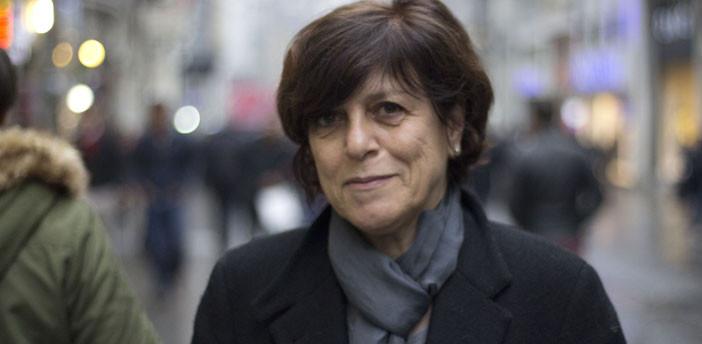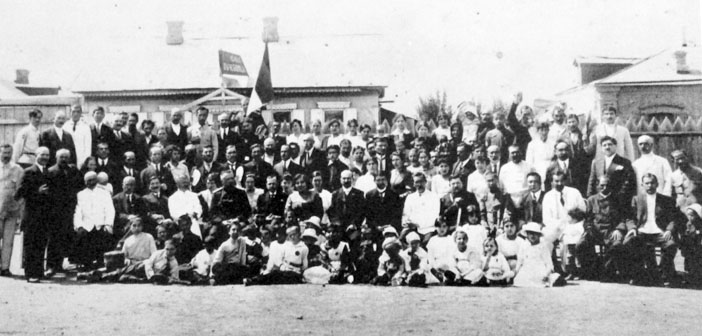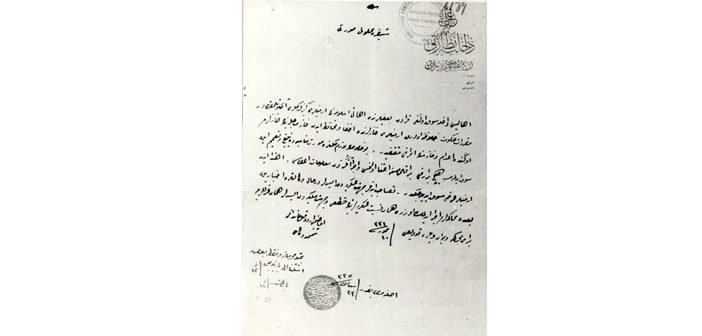Raymond Kévorkian’s book ‘Armenian Genocide’, based on years of comprehensive research, has been published in Turkish with Ayşen Taşkent Ekmekçi’s translation. We talked to Ekmekçi about the translation process, and the importance of the publication of the book in Turkish.
The book published by the İletişim Publishing House and edited by Ahmet İnsel and Kerem Ünüvar focuses on every stage and aspect of the Genocide from the end of the 19th century until the foundation of the Republic of Turkey on the basis of various correspondence, memoirs, consulate reports and witness accounts.
The book runs to a total of 1167 pages, including around 200 pages of footnotes, and its translation into Turkish took 2,5 years. We talked to Ekmekçi about the translation process, and the importance of the publication of the book in Turkish.
I would first like to ask how you felt during the translation process.
The prevailing feeling was one of shame. This is a very valuable study, however, it also wears you down. There were times when I could not breathe, had to open the window to get some fresh air, times when I cried, and left the translation aside. I was ashamed that I had found out so late about the scale of the evil committed on these lands.
It is said that there are a number of differences between the French and English editions of the book. Which version is your translation based on?
There were some differences regarding the figures. I spoke to Kévorkian about this, and he told me I could refer to the French for the main text, and to the English for the footnotes. I managed to reduce the number of any mistakes by comparing the two versions. I also checked the final text a few times after I completed the translation.
How is this book different from other studies in the field?
The difference of this book is that it tells the full story, in the clearest manner, it presents the naked truth… It is also very valuable in terms of the details it provides. It is like a parade of human infamy. Even the most evil act is shown to take a step to the worst; there is no end to evil. The books I read on the topic so far transferred information, whereas this book also broadly includes witness accounts.
Which parts of the book presented you with the greatest difficulty?
The parts about children. The way children were hurled into pits, the difficulties they suffered in orphanages, in great hunger and wretchedness, instances such as children considering plucking out the maggot that infested their wound and eating it… This was all very difficult to bear.
Which part of the book left the strongest impression on you?
I did not know that 20 thousand Armenians were murdered in Cilicia. Since the focus is always on 1915, the Armenian Massacres remain in the background. The events in Dersim also left a strong impression on me. Those who managed to flee to Dersim were saved. Because of its special status, the State could not enter Dersim. On the other hand, the people of Dersim protected those who arrived in their region; they did not turn them in.
Did you carry out any additional research during the translation process?
In order to be certain about some issues I read many books on the topic. I read almost all of Taner Akçam’s books, and Kévorkian’s book, ‘Armenians in the Ottoman Empire on the Eve of 1915’ published in Turkish by the Aras Publishing House. I studied books, articles and texts on Enver Pasha, Talaat Pasha, the Teşkilat-ı Mahsusa/Special Organization, and all the actors, and regions involved. I now have a collection of books on the topic at home. At the moment, I am translating another book on the same subject, Thomas de Waal’s ‘Great Catastrophe’.
“I think everyone is going to start reading the book from the city they were born in, or live in.”
What is the importance for the general public in Turkey of the publication of the book in Turkish?
As I translated the book, I sent related parts of the raw translation to friends in various parts of Turkey. Everyone wanted to know what happened in the city they live in. This book’s standout quality is that it presents, one-by-one, the names of the murdered, and perpetrators, as sources permit. The book also includes inventories of persons whose properties were seized, town-by-town, and village-by-village. I think everyone is going to start reading the book from the city they were born in, or live in. Everyone will seek the traces of their own past in this book. They will find out what happened to the people who once filled all those churches, schools and buildings.
How do you think this book will contribute to encountering the past?
I grew up in a very beautiful, three-storey house in Adapazarı. We always knew this building to be a Greek house. As I translated the book, I found out through my father that the house was in fact an Armenian house, that the neighbourhood was an Armenian neighbourhood, and that before 1915 my grandfather had migrated from Trabzon and bought this house from a miller. Even speaking about such matters with my mother and father constitutes an act of facing the past. I worked day and night, for two and a half years, in the middle of my living room. Friends of my daughter often visited. I spoke with them throughout the translation process. They showed great interest, and they bought and read books on the subject. This book touched the lives of many people even as it was being translated; it encouraged them to ask questions.
Ahmet İnsel: ‘This book will contribute greatly to facing history’
Raymond Kévorkian’s book ‘Armenian Genocide’ is the most comprehensive study I have read on the topic. When it was published in French in 2006, I thought its translation into Turkish would be very important in terms of facing the past. Ayşen Ekmekçi’s meticulous work, and Kerem Ünüvar’s dedicated involvement as editor has produced an almost faultless translation. The difference of this book is that it both relates the events that took place in the process leading to 1915, and also includes all the regions, towns and villages where the Genocide took place in detail and on the basis of witness accounts.





